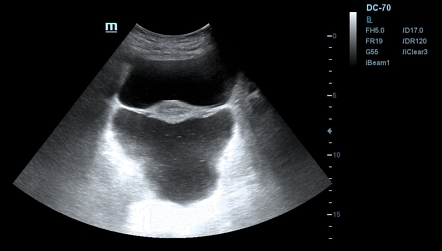Free Fluid in Pelvis on Ultrasound

Free Fluid in Pelvis on Ultrasound
When it comes to pelvic health, medical imaging plays a crucial role in identifying various conditions. One such condition is the presence of free fluid in the pelvis, often detected through ultrasound scans. In this article, we delve into the intricacies of free fluid in the pelvis on ultrasound. We’ll cover the causes, symptoms, and diagnostic procedures, and address common questions surrounding this phenomenon.
Table of Contents
Free Fluid in Pelvis on Ultrasound: Unveiling the Mystery
Free fluid in the pelvis, also known as pelvic fluid, refers to the accumulation of fluid within the pelvic cavity. This condition can be indicative of various underlying issues or could be a normal physiological response. Let’s explore the specifics:
What Is Free Fluid in Pelvis on Ultrasound?
Free fluid in the pelvis refers to the presence of fluid that is not contained within any organ or tissue but instead occupies the pelvic cavity. It can be a result of different factors, ranging from a minor physiological response to a more serious medical condition.
Causes of Free Fluid in the Pelvis
- Ovulation: During ovulation, a mature ovarian follicle releases an egg. This process can lead to the release of a small amount of fluid into the pelvis, which is generally harmless.
- Ruptured Ovarian Cyst: Sometimes, a fluid-filled sac on the ovary (cyst) can rupture, releasing its contents into the pelvic cavity.
- Ectopic Pregnancy: In some cases, a pregnancy implants outside the uterus, typically in the fallopian tube. This can lead to bleeding and the accumulation of fluid in the pelvis.
- Pelvic Inflammation: Infections or inflammations in the pelvis, such as pelvic inflammatory disease (PID), can cause fluid accumulation.
- Trauma or Injury: Trauma to the pelvic region can result in bleeding and the accumulation of fluid.
- Gynecological Conditions: Conditions like endometriosis or adenomyosis can contribute to the presence of pelvic fluid.
Symptoms of Free Fluid in the Pelvis
While the presence of free fluid in the pelvis doesn’t always cause noticeable symptoms, it can sometimes lead to:
- Pelvic Pain: Dull or sharp pain in the pelvic area, which can vary in intensity.
- Abdominal Discomfort: Discomfort or bloating in the abdominal region.
- Irregular Menstrual Bleeding: Changes in menstrual patterns or irregular bleeding.
Diagnosis and Ultrasound
Ultrasound is a primary diagnostic tool for detecting free fluid in the pelvis. It provides real-time images of the pelvic organs and the presence of fluid. The procedure involves applying a gel to the pelvic area and using a transducer to capture images. Ultrasound helps determine the location, quantity, and nature of the fluid, aiding in diagnosis.
FAQs
- Can free fluid in the pelvis be a normal occurrence?
Absolutely. Small amounts of fluid can be a physiological response to ovulation and are generally not a cause for concern. - Is free fluid in the pelvis always a sign of a serious condition?
Not necessarily. While it can indicate an underlying issue, such as an ectopic pregnancy or ruptured cyst, it can also be a transient response to normal bodily processes. - Does the presence of free fluid always require medical intervention?
No, it depends on the cause and symptoms. If there’s no severe pain or other complications, your healthcare provider might recommend observation rather than immediate intervention. - Can pelvic inflammatory disease (PID) cause free fluid in the pelvis?
Yes, PID is an inflammatory condition that can lead to the accumulation of fluid in the pelvis. It’s important to seek medical attention for proper treatment. - How is the quantity of pelvic fluid determined through ultrasound?
Ultrasound helps visualize the amount of fluid present and its distribution within the pelvis, assisting in diagnosing the underlying cause. - Is free fluid in the pelvis treatable?
Treatment depends on the underlying cause. For instance, if it’s due to an ovarian cyst rupture, the cyst might need to be managed or removed. Proper medical guidance is essential.
Read Also: The Scrambler Technique Free PDF
Conclusion
Free fluid in the pelvis on ultrasound is a phenomenon that can have varying implications. While it can be a normal occurrence during ovulation, it can also signal underlying conditions that require medical attention. Understanding the causes, symptoms, and diagnostic procedures associated with pelvic fluid accumulation empowers individuals to seek timely medical care and make informed decisions about their health.




